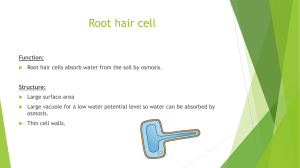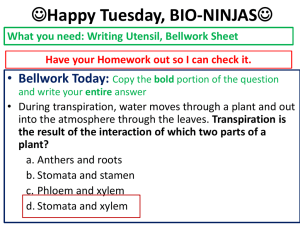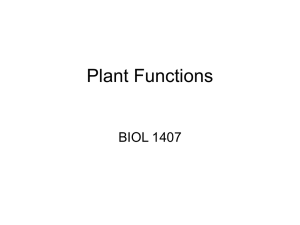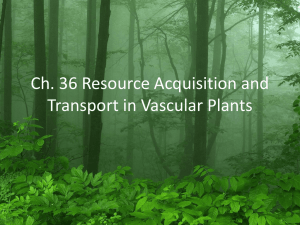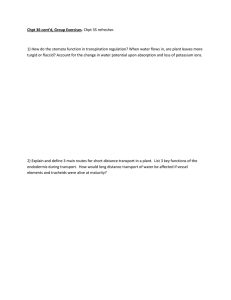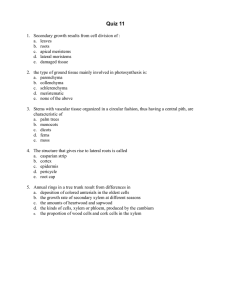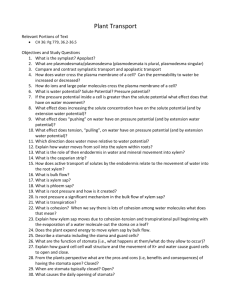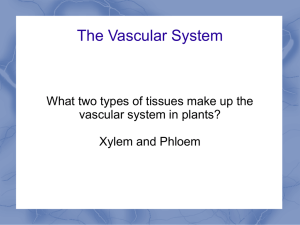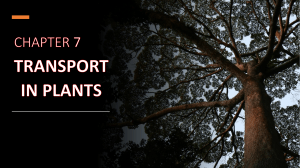TRANSPORT IN VASCULAR PLANTS - CHAPTER 36
advertisement
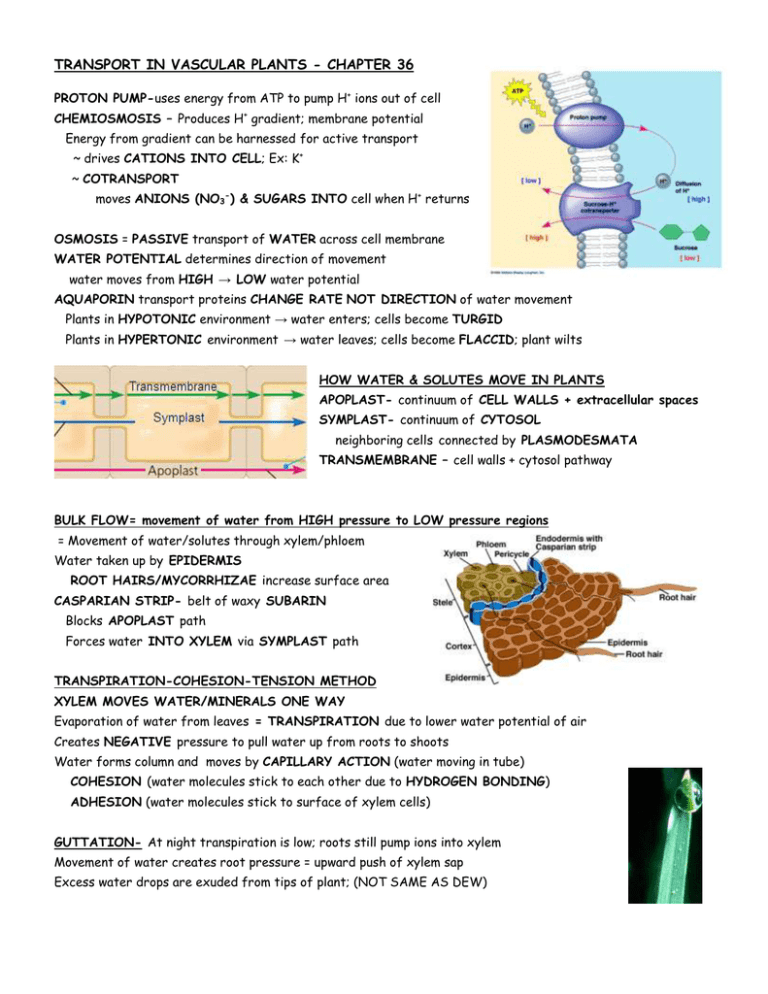
TRANSPORT IN VASCULAR PLANTS - CHAPTER 36 PROTON PUMP-uses energy from ATP to pump H+ ions out of cell CHEMIOSMOSIS – Produces H+ gradient; membrane potential Energy from gradient can be harnessed for active transport ~ drives CATIONS INTO CELL; Ex: K+ ~ COTRANSPORT moves ANIONS (NO3-) & SUGARS INTO cell when H+ returns OSMOSIS = PASSIVE transport of WATER across cell membrane WATER POTENTIAL determines direction of movement water moves from HIGH → LOW water potential AQUAPORIN transport proteins CHANGE RATE NOT DIRECTION of water movement Plants in HYPOTONIC environment → water enters; cells become TURGID Plants in HYPERTONIC environment → water leaves; cells become FLACCID; plant wilts HOW WATER & SOLUTES MOVE IN PLANTS APOPLAST- continuum of CELL WALLS + extracellular spaces SYMPLAST- continuum of CYTOSOL neighboring cells connected by PLASMODESMATA TRANSMEMBRANE – cell walls + cytosol pathway BULK FLOW= movement of water from HIGH pressure to LOW pressure regions = Movement of water/solutes through xylem/phloem Water taken up by EPIDERMIS ROOT HAIRS/MYCORRHIZAE increase surface area CASPARIAN STRIP- belt of waxy SUBARIN Blocks APOPLAST path Forces water INTO XYLEM via SYMPLAST path TRANSPIRATION-COHESION-TENSION METHOD XYLEM MOVES WATER/MINERALS ONE WAY Evaporation of water from leaves = TRANSPIRATION due to lower water potential of air Creates NEGATIVE pressure to pull water up from roots to shoots Water forms column and moves by CAPILLARY ACTION (water moving in tube) COHESION (water molecules stick to each other due to HYDROGEN BONDING) ADHESION (water molecules stick to surface of xylem cells) GUTTATION- At night transpiration is low; roots still pump ions into xylem Movement of water creates root pressure = upward push of xylem sap Excess water drops are exuded from tips of plant; (NOT SAME AS DEW) TURGOR PRESSURE in GUARD CELLS controls water loss through STOMATA K+ transported into guard cells; water follows; TURGID cell = stomata OPEN Loss of K+ and water makes guard cells FLACCID = stomata CLOSE PRESSURE FLOW MECHANISM PHLOEM SAP moves from SOURCE (where it’s made) to SINK (where it’s stored/used) Driven by POSITIVE PRESSURE COMPANION CELLS help load sugars into SIEVE TUBE ELEMENTS HIGH sugar concentration REDUCES WATER POTENTIAL in sieve tubes; water moves into tubes; pressure moves sap downward Removal of sugar at sink INCREASES WATER POTENTIAL in sieve tubes water moves out of tubes into xylem
